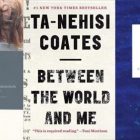Telling the Stories of the Dead: Louisville’s Cave Hill Cemetery
My own ancestors are interred in austere Midwestern cemeteries with small flat stones or rounded markers decorated with the occasional “Beloved Mother” or laser-etched photo. But Cave Hill Cemetery in Louisville, I discover on a field trip with Spalding MFA students to write about art and place, makes much more elaborate use of art, narrative, and poetry in attempts to summarize and pay tribute to the lives of the dead.
I’m fascinated by cemeteries and often disappointed to see lives reduced to names and dates. So Cave Hill, at once a burial ground, arboretum, and sculpture garden, is a treasure trove of stories told in glass, granite, concrete, limestone, and bronze. Here, George Keats, brother of the poet John Keats, is buried, along with the two collaborators who wrote the “Happy Birthday” song, “Colonel” Sanders, and the composer of a confederate song called “Think of Your Head in the Morning.”
Less notable people are also immortalized by elaborate tributes, like a woman named Saundra Twist. An elegant statue of her presides over a stone tablet telling the story of her career as a fashion model followed by the realization of “all of this world’s bountiful wonders,” a husband and three daughters, before she died in a car accident. The grave of a magician buried nearby features a sculpture of him, with a long cape and hollow eyes that catch the sunlight and glitter creepily.
But nothing matches the haunting poignancy of excess in monuments dedicated to children. Birds flock into the sky in a black and white painting on a stone in honor of 16-year-old Brett Allen Gilbertson. Below it, a bench is carved with a poem about a baseball field that has now grown quiet. Maybe the game has ended, “but for Brett it’s just begun.” At its foot, a stone complete with a bronze three-dimensional baseball with detailed crisscrossing bronze stitches carries on the sports theme.
Little brass birds congregate around a miniature birdbath at the monument for three-year-old Samantha Ann McDonald, titled “Jesus is my Swingset.” Young Sami died when she rode her trike into the family swimming pool in 2006. Now a somewhat wizened-looking likeness of her sits atop a wooden plank suspended by ropes gripped by the legless torso of a delighted Jesus. Stones on either side feature, in addition to the birds, the lyrics to Sami’s favorite song, “Jesus Loves Me,” the “o” shaped into a heart and Sami’s signature with a smiley face in the “a.”
I begin to notice birds everywhere: the grave of a pet bird named Pretty Polly, a tarnished St. Francis leaning out from beneath an arch, releasing a dove. An actual robin landing on a stone, ducks and geese loitering on the road, sparrows in the maples and dogwoods. A polished gravestone rising out of natural rock, topped with wrought iron hawks frozen in the act of lifting off. “They will soar on wings of eagles,” says the Kessler family stone, a quote from Isaiah.
But the one place where you might expect to find birds—the grave of Kentucky Fried Chicken magnate “Colonel” Sanders—is noticeably absent of a wrought iron or stained glass or marble or bronze chicken, instead displaying a bust of Harland Sanders. In a poem carved on a stone nearby, his daughter Margaret compares herself not to a bird but to a “ballet dancer/poised briefly with just the tip of one toe/to the earth.”
These objects—a baseball, a swingset, a hawk, a dancer’s toe—can’t fully capture the complexity of a life, but there’s something touching about the effort. As these monuments search for the one perfect image to compact experience and personalities, to pinpoint what is ultimately elusive, they nevertheless offer starting points from which whole stories can unfold.




